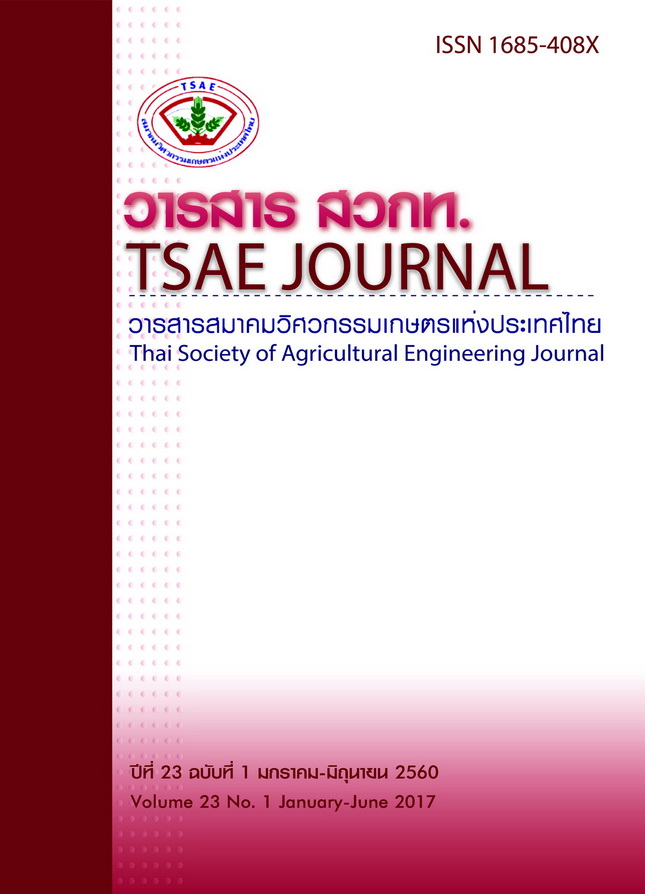Classification of mung bean seeds for sprout production using near-infrared spectroscopy and hyperspectral imaging
Main Article Content
บทคัดย่อ
This research studied application of near infrared spectroscopy (NIRS) technique and Near-infrared Hyperspectral Imaging: (NIR-HSI) for classification between normal (germinatable) and hard mung bean seed (un-germinatable). The mung bean samples used in the study were harvested from two crops. The samples with hilum face-up were taken for absorbace measurement with NIRS based on combination of reflectance and tranmittance in comparison with NIR-HIS technique. The optimum NIRS calibration equation using partial least squares discriminant analysis (PLSDA) was based on the spectra pretreated with smoothing, second derivative and multiplicative scattering. Upon predicting whether the seed was germinatable, the equation obtained the correlation coefficient and root mean square error of prediction (RMSEP) equal to 0.711 and 0.395 respectively (classification accuracy of 84.85%). The improvement of the equation predictability was achieved by normalization with absorbance at 1150 nm. The normalized model gave classification result with r and RMSEP equal to 0.965 and 0.132 respectively equal to 100 % accuracy. The results from NIR-HSI gave better classification result with r and RMSEP equal to 0.990 and 0.070 respectively (100% accuracy for classification). The advantage of NIR-HIS over NIRS was the ability to show the images for difference between normal seed and hard seed.
Article Details
รูปแบบการอ้างอิง
PHUANGSOMBUT, K., Terdwongworakul, A., Suttiwijitpukdee, N., & Phuangsombut, A. (2017). Classification of mung bean seeds for sprout production using near-infrared spectroscopy and hyperspectral imaging. วารสารสมาคมวิศวกรรมเกษตรแห่งประเทศไทย, 23(1). สืบค้น จาก https://li01.tci-thaijo.org/index.php/TSAEJ/article/view/74212
ประเภทบทความ
Post-harvest and food engineering
สมาคมวิศวกรรมเกษตรแห่งประเทศไทย
Thai Socities of Agricultural Engineering


